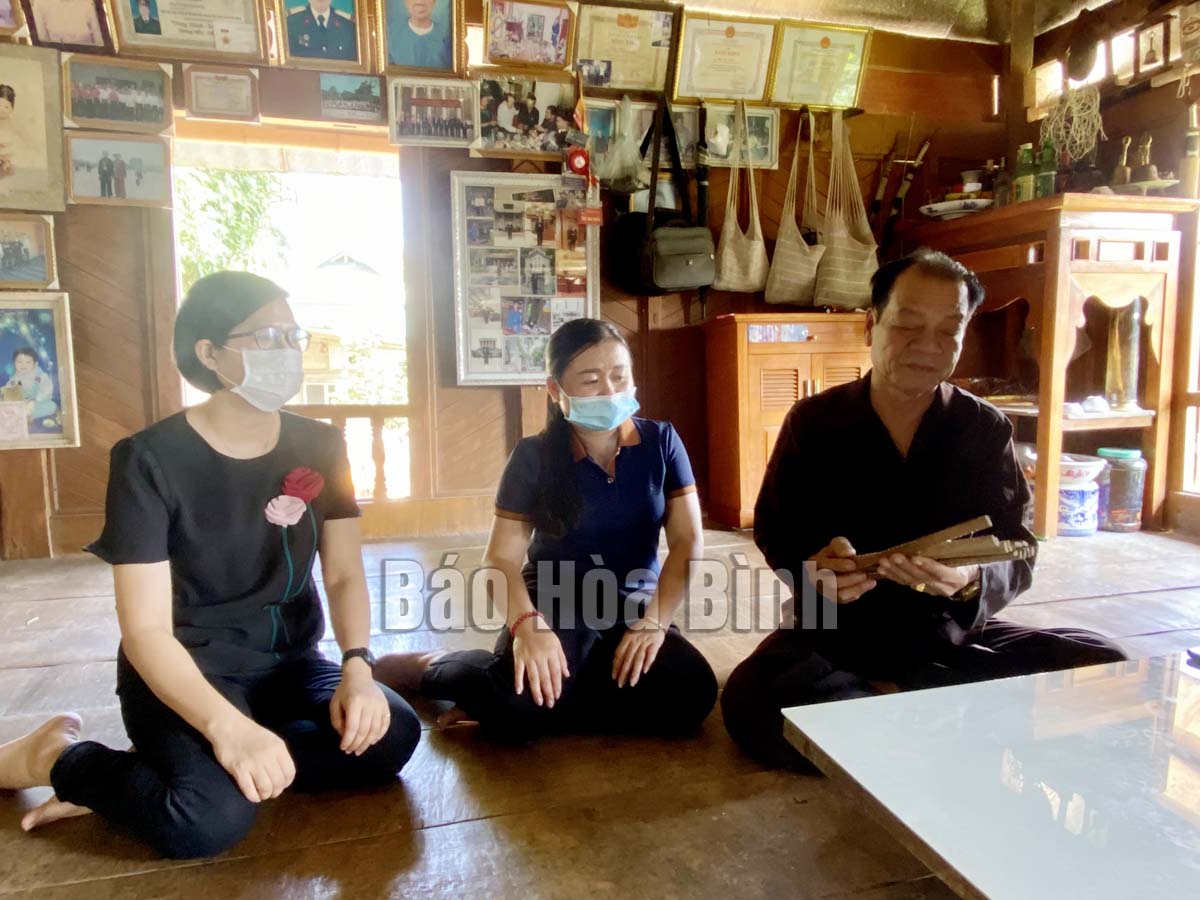



Artisan Bui Van Lung residing in Muong Lam village, Phong Phu commune (Tan Lac district) introduces the Doi calendar of Muong people.
To begin his story, the artisan said that families now use Gregorian calendar to read the date and month. However, people in Muong Bi still use the Doi calendar. His ancestors told him that the calendar appeared when local people look at the moon and stars to predict weather. It took hundreds of generations to complete the operation of the calendar.
It was made of 12 bamboo sticks of 20 cm in length and 2 cm in width, representing 12 months of the year. Each bamboo stick has 30 carvings symbolising 30 days.
Regarding the calendar, Lung said that each month of the year has exactly 30 days, no more or less. Each carving in the stick represents a day. On the stick, Muong people carve a line and can read the date.
Good days are ones without the lines and holes. A fishtail symbol shows days that are favourable for going fishing. Meanwhile, a star symbol means that the date is not suitable for doing anything.
An arrow indicates stormy days which are primarily in the 10th month. People are warned against doing anything, even cultivation, on the days with marked with holes.
Days from the first to the tenth of a month are called ‘cay’ days, while from the 11st to the 20th are ‘long’, and the remainders of the month are ‘cuoi’ days.
Muong people in general and Muong Bi people in particular often do important tasks on the first days of the month, or ‘cay’ days and avoid bad days (the fifth, 14th and 23rd).
The fourth month is time for fish to lay eggs, so the fishtail symbol is carved. Based on that prediction, people will start catching fish in rivers and streams.
According to the Doi calendar, the fourth month marks the first month of the year. Kinh people celebrate traditional Tet holiday on the first day of the year, which Muong people consider it the 30th day of the 12th month.
Lung added that although only few people read the Doi calendar, it is a collective knowledge that presents in all spheres of Muong people’s lives, helping them predict weather and good and bad days.
When they build houses, buy cars and cattle, as well as organize wedding ceremonies, many families in Muong Bi region still use the Doi calendar.